Solar-powered Irrigation and On-Farm production
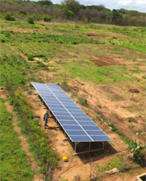
Agriculture is a highly demanding energy sector. Electrical and mechanical power is required in agriculture for a number of activities, including land preparation, seeding, irrigation, and harvesting, amongst others. Furthermore, water pumping and distribution through irrigation systems demand the availability of consistent and reliable energy resources. The water-energy nexus, in the agricultural sector, is instrumental, and any increase in demand in any one sector has flow-on effects on the other one.
Urban environments are equally confronted with the high and ever-increasing energy demand to supply water and ensure a healthy and widespread provision of resources for domestic and industrial uses. The implementation of solar-powered pumping systems can also increase access to sustainable and safe water resources for both domestic and production purpose.
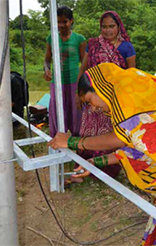
In 2017, Central and Southern Asia and Northern Africa registered very high water stress of over 70%, followed by Western Asia and Eastern Asia with high water stress of 54% and 46%, respectively. The spreading of COVID-19 increased the demand of safe water resources both in rural and urban contexts and the growing consumption by different economic sectors and households is raising the energy demand accordingly. Investing and implementing technological solutions that can provide reliable, affordable and sustainable energy resources is key to address the challenges posed by the pandemic and contribute to avoid its further spreading.
Benefits of solar-powered irrigation for agricultural production
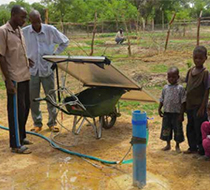
- Solar technologies are becoming a viable option for both large and small-scale farmers. Solar powered irrigation systems (SPIS) provide reliable and affordable energy, potentially reducing energy costs for irrigation. Particularly in rural areas, where cost of diesel fuel is high or where reliable access to the electricity grid is lacking, they can provide a relatively flexible and climate-friendly alternative energy source.
- Solar-powered irrigation technology has been gaining interest worldwide and governments have been promoting strategies to promote renewable energy solutions, including solar energy. In the agricultural sector, solar-powered irrigation can be particularly successful to overcome the frequently occurring energy shortages causing disruption of supply needed for lifting and distributing irrigation water. Challenges, however, remain in the monitoring and governance of abstraction through water pumping systems. Nevertheless, sustainably managed solar-powered irrigation, ultimately, represents a reliable, cost-effective and environmentally sustainable solution to reduce farmers’ vulnerability to energy shortages that hampers production capacity.
Country cases
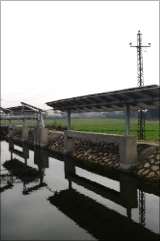
Egypt: Solar-Powered Water Lifting for Irrigation 86.5kwp in the Nile Delta Phase I, II
In the Nile Delta, Egypt, irrigation canals are frequently located below ground level, necessitating the use of pumps to lift water to the fields. Pumping is performed through fossil fuels, directly with diesel and indirectly with electricity. Traditionally confronted with low water availability (below 700 m3/year/capita), the agricultural sector in Egypt has been recently facing energy crises, as increasing electricity demand from urban areas results in frequent shortages and blackouts.
Al-Afir project –Phase I Site pictures are included SWPs powered by 57.6KWp Source: FAO, 2017, El- Behiera Governorate, Egypt
Phase I : Al-Afir consists of 4 pump rooms at a single location over a covered mesqa in the Al-Afir region, www.fao.org/neareast/news/view/en/c/1158041
Phase II : consists of 2 identical pump rooms located along a branch mesqa in the Al-Sourya region, www.fao.org/egypt/news/detail-events/en/c/1179095

Jordan: Three-pronged approach combining water harvesting, conjunctive use of groundwater and solar powered water lifting for irrigation.
Jordan’s water deficit is projected to become even more severe in the future. If renewable supplies were to remain constant, the severe water shortages likely to be faced by Jordan require a comprehensive approach to managing both water supply and water demand.
To reduce the country’s vulnerability in the context of water scarcity and increasing food/energy demand, FAO is piloting in Jordan a three-pronged, community-based approach, combining water harvesting, conjunctive use of groundwater, and solar power for lifting irrigation water in order to generate food and income in a sustainable manner.
Uganda, Strengthening Agricultural Water Efficiency and Productivity on the African and Global Level
Agriculture dominates the Ugandan economy and society, contributing to 44% of the total output and employing 80% of the labor force. FAO promoted the employment of solar-based solutions for agriculture, through a comprehensive approach including innovative farming practices. The pilot focused on soil and water conservation and in-situ water harvesting (WH) techniques, integrated soil fertility management and solar water pumping from the tank, for small-scale localized irrigation of high value crops.
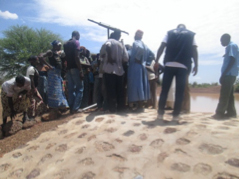
Burkina Faso, Strengthening Agricultural Water Efficiency and Productivity on the African and Global Level
In line with Government’s AWM policies, a participatory process was implemented for the design and operation of a pilot site for the conjunctive use of water resources for irrigation and agricultural production. Main benefits resulted, on one side, in the enhancement of existing water storage infrastructures through solar-powered lifting solutions and, on the other, on the full employment of groundwater resources and the separation of water uses for livestock, irrigation and households (“tap for women”)
For more info please contact:

